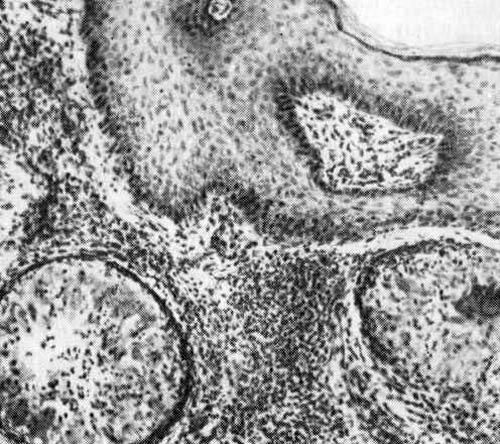Pathogens chromoblastomycosis
Last reviewed: 23.04.2024

All iLive content is medically reviewed or fact checked to ensure as much factual accuracy as possible.
We have strict sourcing guidelines and only link to reputable media sites, academic research institutions and, whenever possible, medically peer reviewed studies. Note that the numbers in parentheses ([1], [2], etc.) are clickable links to these studies.
If you feel that any of our content is inaccurate, out-of-date, or otherwise questionable, please select it and press Ctrl + Enter.
Chromoblastomycosis (chromomycosis) is a chronic granulomatous inflammation with a lesion of the skin, subcutaneous tissue of the legs. Chromoblastomycosis is caused by many fungi, including Fonsecaea ctmpaeta, Fonsecaea pedroaoi, Phiahphora verrucosa, Ctadophiatophora carrionii, Exaphiala jeamelmei, Rilinosporidium seeheri. Many of them are dimorphic fungi. They include (along with the causative agents of feigiophomycosis and mycetoma) to demacic fungi, characterized by a brownish-black hue of the colony and the cell walls of the fungal elements. A dark shade is due to the presence of melanins in them.

Morphology and physiology
Pathogens are found in tissues and exudates in the form of clusters of round dividing cells (diameter 10 μm). Fungi grown on Saburo medium form fluffy colonies of dark brown tones, consisting of septic mycelium and various types of conidia.
Pathogenesis and symptoms of chromoblastomycosis
Infection occurs when the causative agent enters the microtraumas of the skin, and more often on the feet and legs. Within a few months or years on the skin, warty nodules are formed, abscesses and scar changes appear. Around the primary lesion, convex satellite changes are formed in the form of cauliflower. Cellular immunity prevails in patients, HRT develops.
Microbiological diagnosis of chromoblastomycosis
In pathological material treated with a 15% solution of KOH, brown rounded cells of the pathogen of 10-12 microns are detected. So-called sclerotia with partitions. The exception is Exophiala, characterized by the formation of septate hyphae, as well as Rhinosporidium seeber, which forms sporangia and sporangiospores.
When cultivated on Saburo agar at 20-25 ° C, the pathogens of chromoblastomychosis form slow growing colonies (11 days in height) consisting of black septate mycelium and various types of conidia.


 [
[